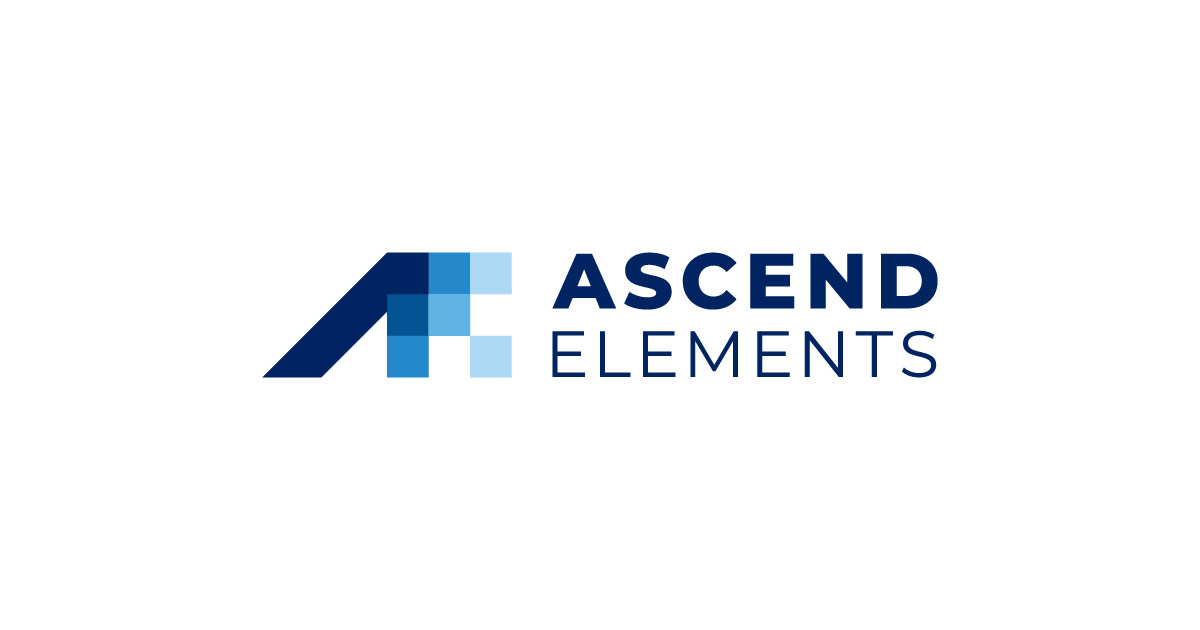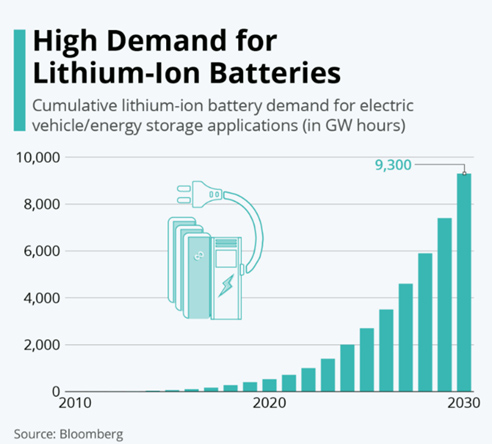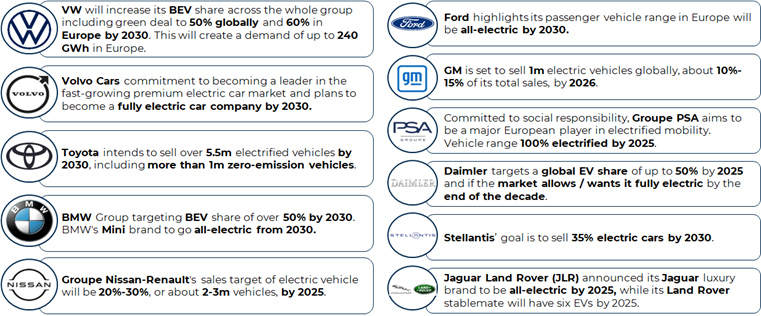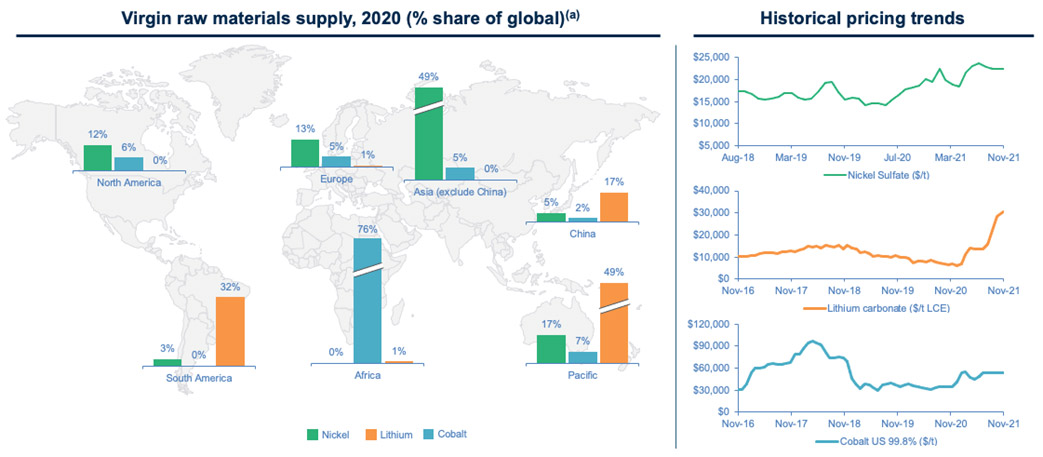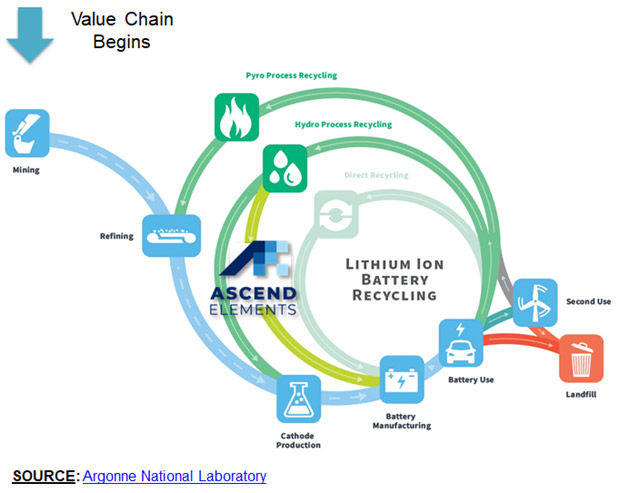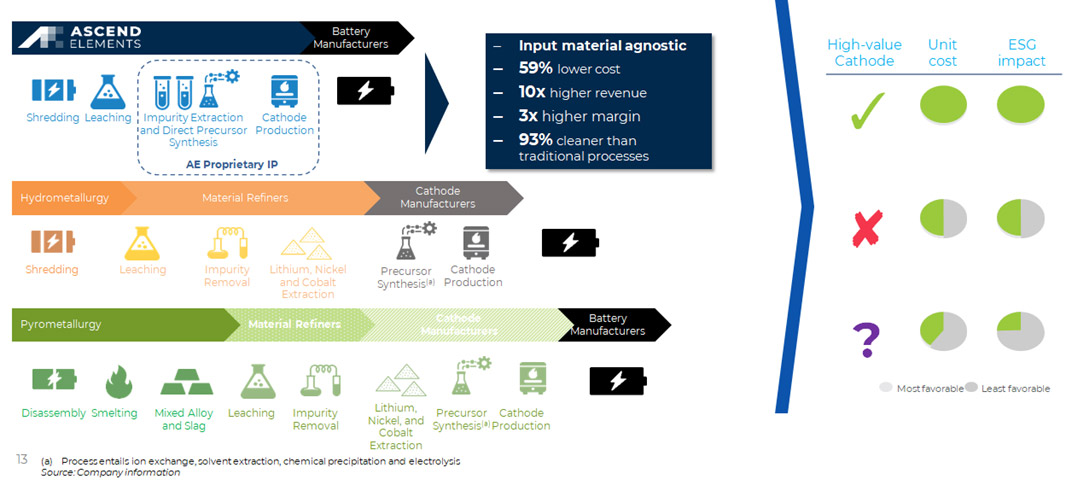Introduction
Anil Achyuta — Investment Director, TDK Ventures
Since we founded TDK Ventures in 2019, it has been our passion and mission to build a sustainable future and help usher in the energy transformation (EX) needed to get us there. As a team, we immediately dedicated ourselves to the due diligence necessary to find just the right company for potential investment that embodied those goals and had the innovative technologies and mindset to make that future a reality. In our research, we quickly learned how pivotal a role lithium-ion batteries have served to accelerate global electrification and change the way we use and tap into energy — we also learned how rare the material components of Li-ion batteries were (are). What followed as a company, was to dedicate our time to Li-ion battery recycling as one of Our Deep Explorations, and in early 2020, we found one of our answers in Ascend Elements (then known as Battery Resourcers). Committing to their vision for a new kind of lithium-ion battery recycling, we invested in Ascend seeing their technology as the pathway to lower costs, a lower carbon footprint, and a strategic pathway that could decouple LiB technology (and through it a significant portion of EX) from the ever-changing dynamics of geopolitical relations.
Since our initial partnership, Ascend has delivered on their vision and began a paradigm shift in the life cycle of lithium-ion batteries — saving valuable time, resources, and money while simultaneously yielding higher performance. Reflecting on our past year, we at TDK Ventures wanted to take a moment to share our thoughts on the battery recycling space, and detail how Ascend has accelerated our shared vision for a more sustainable future.
Market Context: Resource Demands of Electrification
The push for the sustainable electrification of mobile transportation has become an undeniable fact of our world. The carbon cost of human society has taken its toll and we are all collectively trying to counter the repercussions. Global socio-economic pressure has driven the United States to vow a 50% reduction in greenhouse gas emissions by 2030, with the Europe Union announcing the benchmark of zero carbon emissions by 2035 — with both launching multiple government initiative to fund and spur progress. Even before large scale political backing of these goals, the last decade has seen a huge boom in electric vehicle research and development, which is becoming more and more mainstream. Unsurprisingly Tesla still possesses the lion share of the market, but many OEM’s are declaring their intentions to become major players themselves. BMW, Volvo, and Jaguar/Land Rover have all committed to going 100% electric in the next 10 years. Similarly, GM, Ford, Toyota, Nissan, and others are declaring targets of up to 1/3rd of the market share along the same timeline[1].
This signals a promising megatrend in socio-technological focus, but also represents many logistical and infrastructure-limited challenges. Since the steam engine and the first industrial revolution, humanity has relied on widely abundant carbon-based fuels for power, and now we have to rethink the whole picture. Not just the technologies that are using power, but the supply chain that enables it all to happen seamlessly. Lithium-ion batteries, the work horse of electric vehicle (EV) design, are projected to see a demand of 9.3 TWh of energy in 2030[2] (Figure 1).
Figure 1. Energy demand for lithium-ion batteries projected out to 2030 and OEM movement towards EVs[2].
This benchmark dwarfs current capabilities by about 10-fold, and both industry and government is rushing to address the technical gaps in the way including more than $500 bn in promised funds and a pledged 4.5 TWh of increased capacity by that same timeline[3]. Money and intention not withstanding however, a critical piece of building a new EV-centered world is raw materials.
Despite being detrimental to the globe, and being far from unlimited, the supply of fossil fuels has historically been (relatively speaking) easy to access, extract, and refine to a final usable energy source. Lithium-ion batteries are in contrast more complex and require bringing together a combination of several more traditionally exotic natural resources including cobalt, nickel, and of course lithium carbonate. Together these materials are processed together into a positively charged mixture which serves as the cathode component of each battery. A cathode, used in tandem with an anode module is sandwiched around an electrolyte medium which then enables electrical current to flow — producing the final battery product. Sourcing these materials presents a critical supply chain problem. In the current global economy, they are expensive and experience volatile pricing due to unsustainable mining practices and sociopolitical relations. Figure 2 maps the geographical distribution of raw materials, which helps visualize the logistical issues they can and have posed.
Figure 2. Material supply for lithium-ion battery constituents distributed around the globe[4].
So, while EVs are more sustainable for the climate and environment, the continued production of battery power to meet the demands of human progress are less so. The energy transformation community-at-large has felt the mounting pressure of these demands for the past several years and innovators or financiers alike are keen for any solution which contributes to the improvement and sustainability of the Lithium-ion battery infrastructure.
LiB Battery Recycling
Resource concerns have served as strong motivation to consider ways in which lithium-ion batteries, or their components, could be recycled or otherwise reused in some way to extend their lifecycle. The difficulty lies in the complexity of the batteries themselves and at one point in manufacturing process to leverage used materials. The “first life” value chain begins with mining of raw materials, which as was already discussed from above is costly and subject to sociopolitical stipulation. After extracting raw materials, these are then refined into a usable form for manufacturability. For example, lithium is often found raw as lithium carbonate, which must be further chemically refined into lithium hydroxide for use in batteries. These refined materials are then combined to make the individual battery components, primarily the cathode and anode portions prior to final assembly and end use. Figure 3 outlines this life cycle showing the five main stages of LiB life — mining, refining, cathode production, battery manufacturing, and battery use.
As Figure 3 also explores, each of these stages represents a potential point to reuse components. When LiB recycling was first considered, it seemed an almost logical first step was to extract all salvageable raw materials (lithium, cobalt, nickel, etc.) from used batteries and reinject them through the same manufacturing process. This required little disruption to existing processing lines and just the additional expenditure of isolating the raw materials over again to be refined.
While this pathway was demonstrated excellent utility in reusing resources to increase the lifetime of LiB technology, questions of efficiency still remained. These used materials were having to be reprocessed, with each cost adding to unit cost of each LiB pack, not to mention the carbon footprint associated with reprocessing. Cathode production costs alone, make up 40–50% of price for each battery[6], and so identifying a technology which could recycle cathode materials or cathode precursors directly could represent not only huge progress for the sustainability of the technology, but would also provide a price incentive to battery-based companies wherein the use of recycled batteries would actually be preferred.
Figure 3. Life cycle of a lithium-ion battery and stages of recycling and reuse currently being explored[5].
Ascend Elements: Disrupting the Market
It was at this point in our analysis of the market space, where we were fortunate enough to begin interacting with Ascend Elements. Ascend had developed novel process to convert used Li-ion batteries and related manufacturing scrap into EV-ready grade cathode active materials, cathode precursors, and anode materials that could then be readily assembled into a new battery. This meant battery manufacturers and OEMs could skip the refining and cathode/anode production steps from virgin materials and potentially introduce a large percent of recycled materials in their finished batteries. That’s a potential for a 59% reduction in unit cost by introducing recycled materials, and an estimated 93% reduction in carbon footprint impact due to reduced processing requirements (when compared to using virgin materials) — a win for both the company, the consumer, and the planet.
Through our conversations with the Ascend team, we knew this could be game changing for the recycling space and could further our own mission at TDK Ventures in a big way, bringing about the energy transformation in a meaning and sustainable way. We partnered up soon after our Series B investment. Over the past year, not only have they accelerated their own development as a company, but in so doing they’ve accelerated our mutual vision for sustainable energy transformation. Here’s a few of the key milestones we’ve witnessed them celebrate:
- Ascend commenced construction of two recycling facilities, including a 154,000 sq. ft. plant in Covington, Georgia which will be capable of processing up to 30,000 metric tons per year, as well as the 500,000 sq. ft. facility in Hopkinsville, Kentucky capable of equipping over 250,000 electric vehicles per year with their recycled batteries.
- Value extraction from end-of-life lithium-ion batteries shown to result in more than 10x more revenue and almost 3x the margin.
- Testing has demonstrated their recycled cathodes outperform those produced by traditional means, providing additional incentive both to provide Ascend with used battery stock and to purchase their recycled units. (click here for article)
- They have established a recycling process that is material agnostic, ensuring that as future manufacturing methods develop and mature that they’re recycling method remains relevant and useful.
- Prior to 2021, Ascend had already established partnerships with both the US Department of Energy (DOE) and the National Science Foundation to accelerate their technology, and in 2022 the DOE followed up with an incredible $480 million to directly support Ascend production and operation (click here for article).
- They’ve gained significant traction with industry. Since our partnership, Honda, Hitachi, SK Ecoplant, Jaguar Land Rover, EcoPro and many other industrial leaders, battery manufacturers, OEMs have joined the club.
They have demonstrated that their technology and process deliver on its potential and industry has shown resounding interest, securing both Ascend’s needed supply of used batteries and their customer base for their refurbished product. Concerning their partnership, the Battery Business Unit Manager at Jaguar Land Rover said,
“We considered 14 recyclers for partners; Ascend was the clear favorite. Ascend’s high-value products, technological sophistication, and ease of doing business set them apart.” He continued, “Ascend’s unique selling point is that their leading technology actually works and gives OEMs options to choose from.”
Overall, ASCEND has accelerated so quickly because they identified and met a critical niche in the LiB space. They are addressing the identified scarcity of raw materials and resources by creating a viability pathway to reuse battery materials in a both sustainable and cost-effective way. They are reducing risk by vertically integrating regionally removing the reliance on geopolitical stability for supply chain management. Bottom line simplified the battery recycling process putting very little action onto the end user — cutting out manufacturing steps and middlemen along the way (Figure 4).
Figure 4. Simplification of the LiB “upcycling” by Ascend’s Hydro-to-cathode™ process.
TDK Ventures Strategic Alignment
Our partnership with Ascend has been a point of pride over the past year. Right off the bat, our mutual vision was fundamentally aligned — a better tomorrow for all of us, accelerating energy transformation in a sustainable way. This had TDK Goodness written all over it, and the past year the Ascend team has delivered on all fronts. They’ve proven their technology, mitigated risk, and gained significant market traction accelerating full speed ahead (and quadrupling their team size in the process). As with all our investment decisions, we strive to be able to answer the same key questions to motivate our choices
- Does this unlock meaningful megatrends in transition? Very much so. Within the EX-space, this is paradigm shifting tech that enables greener, cheaper, and better LiB production. This both enables the greater EV/EX megatrend and sets its own within the LiB recycling sector.
- Does it provide venture like returns? Yes. Looking to 2025, there is a projected $6.5 billion market for the battery recycling market, an 87% CAGR. Ascend is well positioned to be the King of the Hill in North America (perhaps even beyond) and deliver venture returns while seeing our mutual vision to fruition.
- Does this provide strategic value? Yes, in multiple aspects. Partnering with Ascend provides TDK and TDK Ventures with significant potential for learning in both the EX and the space of circular economy. Specifically, this includes an improved view of the battery recycling ecosystem within North America and Europe and an understanding of the regulatory changes and market response to EV-driven recycling.
- Is this sustainable? Yes, both as an operation and in pervasively supporting overall sustainability across the lithium-ion battery industry. With continued success, Ascend represents the most sustainable technology in the space compared to peers (and at a lower price point).
References
- Roland Berger
- Bloomberg
- Roland Berger, Reuters
- Roland Berger, CRU
- Argonne National Laboratory
- Wolfgang Bernhart, Roland Berger

